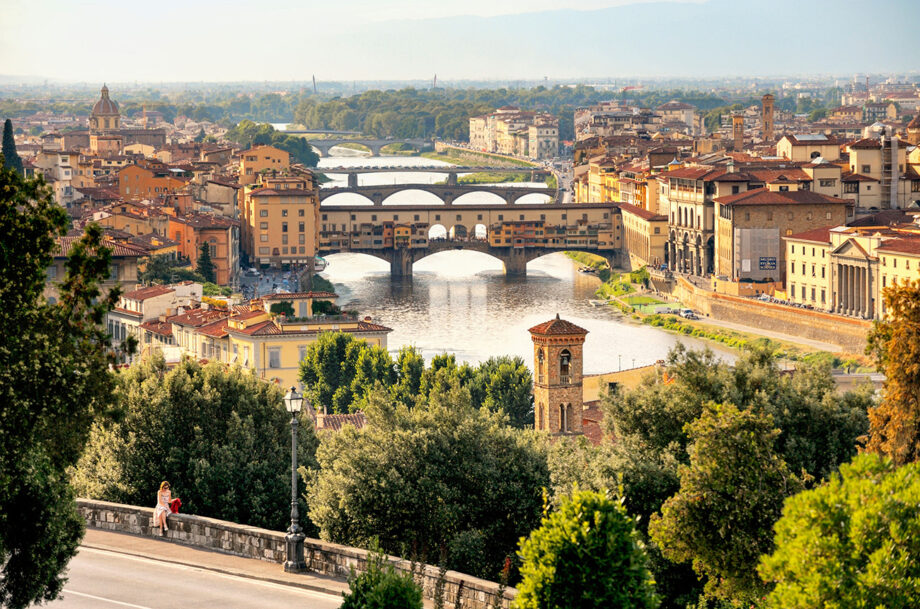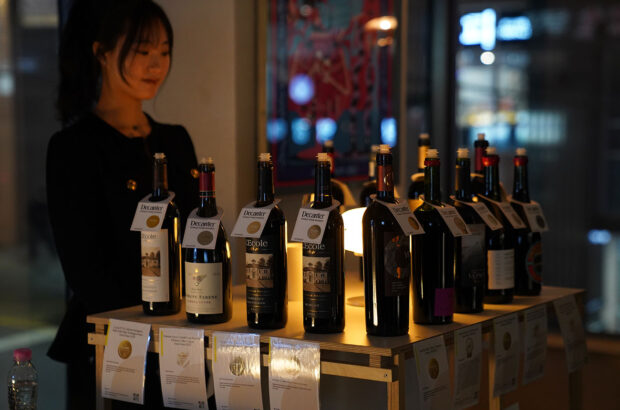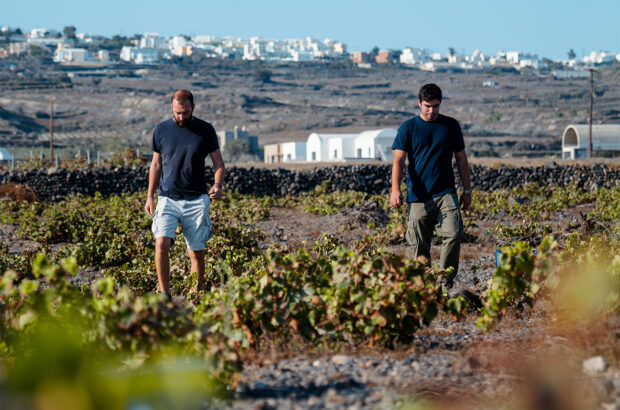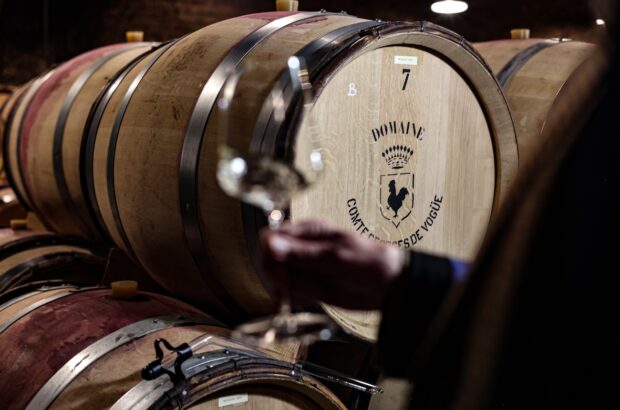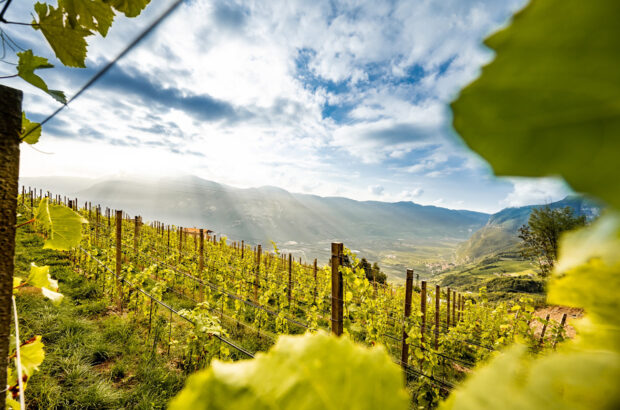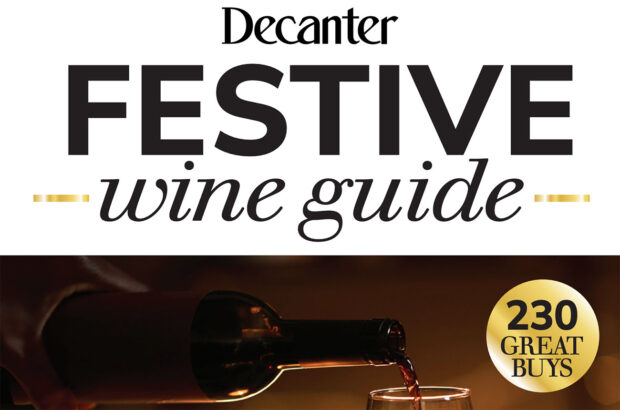Tuscany is like a great bottle of wine; lovingly created and carefully aged. The longer you spend contemplating its rich hues, the better it gets.
This breathtaking region boasts rolling hills that are home to some of Italy’s most celebrated wine appellations, as well as some of the oldest – some dating back to the 18th century.
Among them you will find iconic Chianti Classico, elegant Vino Nobile di Montepulciano, the princess of whites Vernaccia di San Gimignano, bold Carmignano, and probably the most important collective wine brand in Italy: the rich Brunello di Montalcino.
Base yourself in the vibrant city of Florence, just a scenic drive away from the enchanting Chianti Classico region where you’ll find wineries paired with Michelin-starred dining experiences, opulent resorts and the homes of famous names like Michelangelo, Dante or Petrarca.
If you’re craving something a bit more off the beaten path, head to the Apennine mountains to enjoy the refreshing biodiversity of the Mugello and Casentino regions, sipping some crunchy Tuscan Pinot Noir! For art lovers, this is where another famous painter was born: Giotto.
Visit the coast
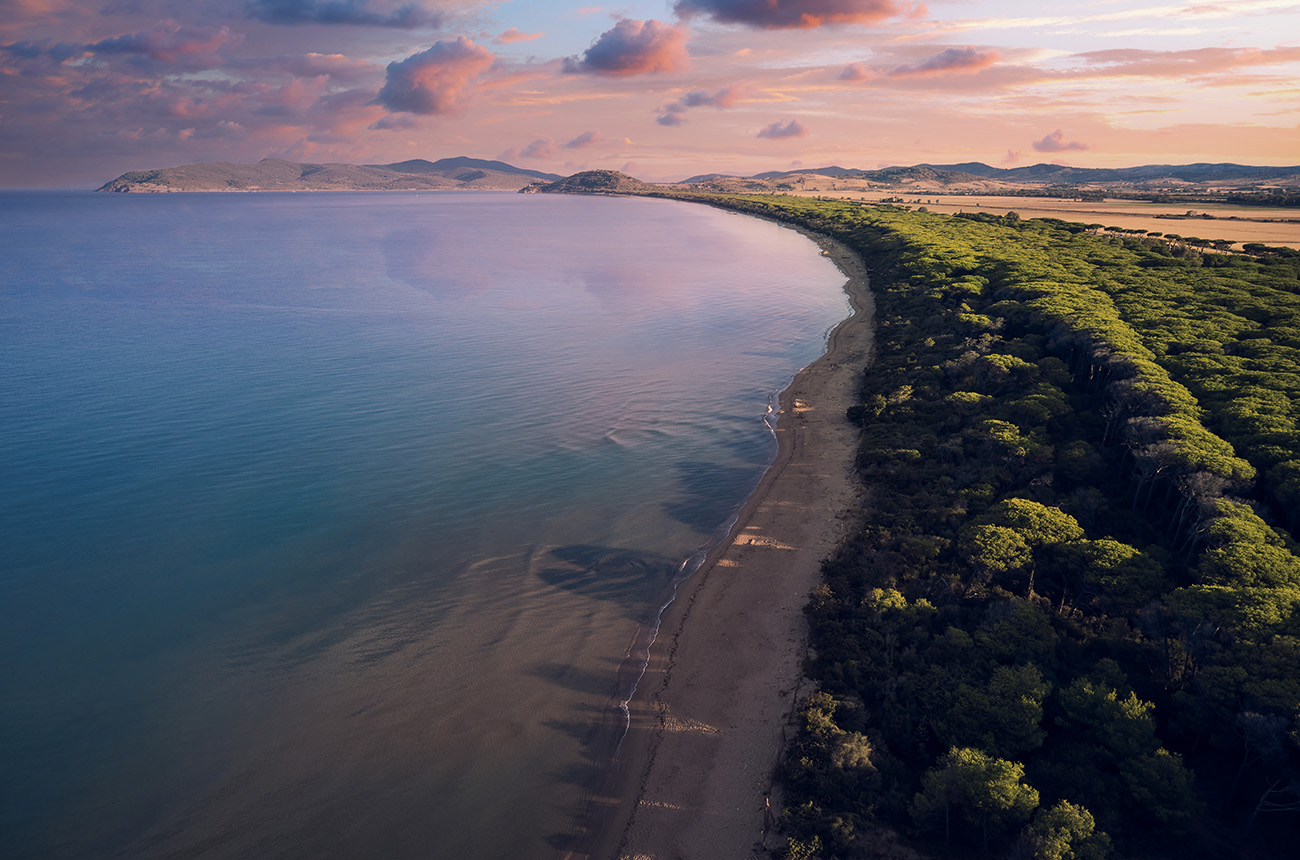
Aerial view of the marine coast leading to Talamone in the Tuscan Maremma. Credit: Massimo De Santis / iStock / Getty Images Plus
Whether you choose to make the medieval cities of Florence or Siena (both Unesco world heritage sites), or an agriturismo by the sea your home for a few days, you can ride some truly picturesque roads southwest bound for Tuscany’s coastal vineyards.
Notable are the acclaimed SuperTuscan wineries in the Bolgheri DOC area, where you can leisurely cruise down enchanting lanes lined with centuries-old cypress trees. And for those looking to escape the bustling crowds, the hidden gems of the Morellino di Scansano, Montecucco and Maremma wine trails await your discovery!
More than wine
A Tuscan wine tour is far more than just a quick stop at a roadside bar; it’s a deep dive into the region’s rich heritage and enchanting landscapes. Picture yourself meandering through the ruins of ancient churches and standing in the very places that inspired the genius of Leonardo da Vinci.
And let’s not forget – the simple culinary magic of Tuscany steals the show. Expect to indulge in some delicious research on perfect Tuscan wine and food pairings as you explore this gastronomic paradise always built on simple ingredients, clean architectures and incredibly preserved landscapes.
We’ve curated a list of 10 must-visit Tuscan wineries, each offering an unforgettable experience that will enhance your journey. It’s the ultimate guide to savouring the heart of Tuscany on your next adventure. Cheers to new discoveries!
Travel tips
Getting around these wineries ideally requires a car, as many are situated in rural, secluded locations.
Distances between the wineries listed below can be significant, so plan for several days of visits and group them by area for the most efficient approach.
Florence area
Capezzana and Castello di Nipozzano are both easily accessible from Florence, making a morning visit from the city a breeze.
Chianti Classico
Antinori and Castello di Querceto are situated in Chianti Classico, known for its winding roads and medieval villages. While still not too far from Florence, there’s plenty to explore here – including some fantastic restaurants – so it’s best to allow a full day (or two) to take in the views and enjoy the wines with food.
The coast (Bolgheri & Maremma)
The coastal wineries are more spread out, and this route offers a different feel, with stunning coastal views, dotted with scrubland, plane trees and cypresses, and more of a focus on international grape varieties such as Cabernet Sauvignon and Merlot.
South-Central Tuscany (Montalcino & Montepulciano)
The hilltop towns of Montalcino and Montepulciano are less than an hour apart by car, but they each pack in plenty of wineries you might want to visit, aside from those recommended below. Allow at least one full day to sample the delights of these Sangiovese strongholds.
Your Tuscan references
Read these other helpful articles from Decanter to ensure you get the most from your Tuscan wine tour:
Baudains: How Tuscany created Europe’s first DOCs
Terre di Pisa: Bridging the coastal and continental styles of Tuscany
Expert’s Choice: Coastal Tuscany
Lucca – 10 must-visits for food and wine lovers
Decanter’s Dream Destination: Villa La Massa, Tuscany, Italy
Decanter’s Dream Destination: Borgo San Vincenzo, Tuscany, Italy
Florence area
Capezzana
Carmignano, northwest of Florence
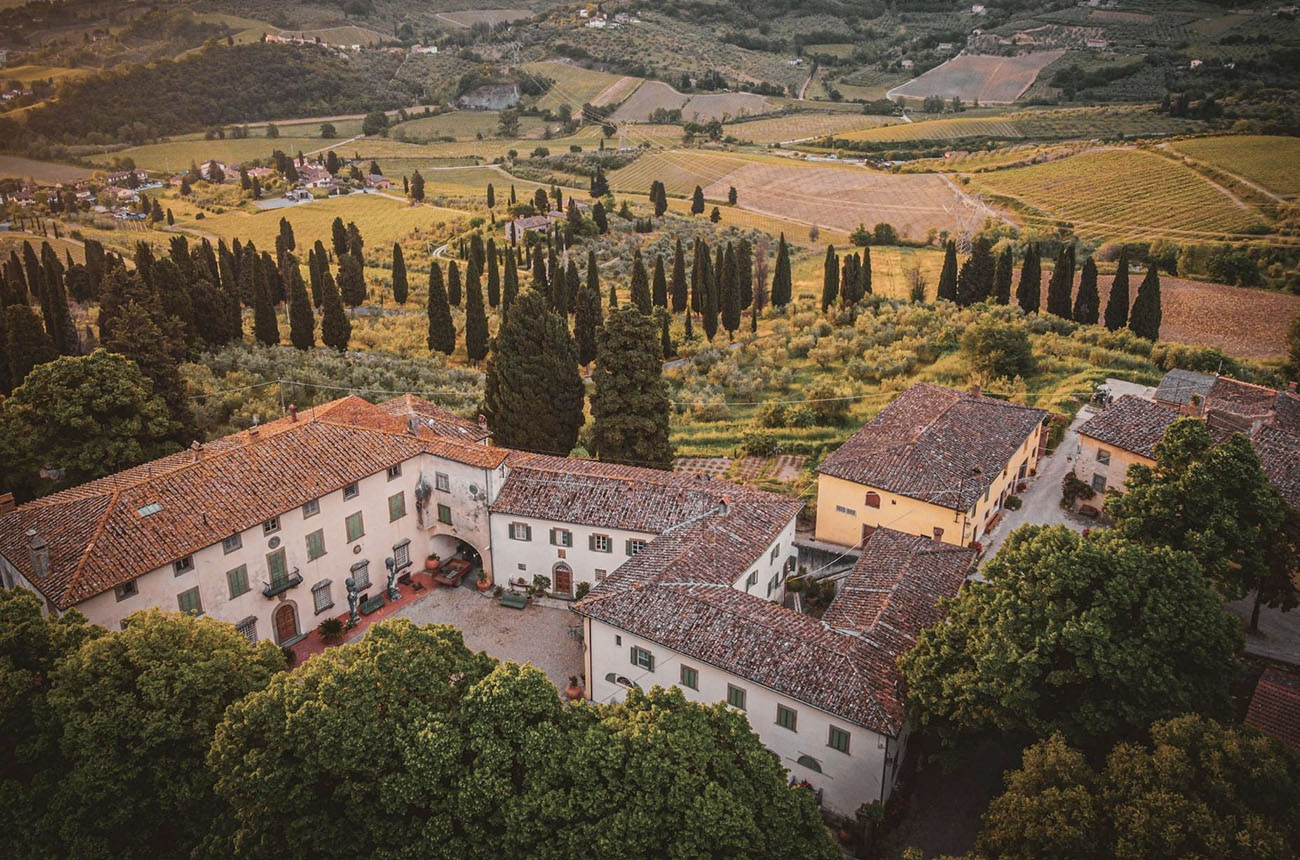
Credit: Tenuta di Capezzana
Why? A historic, rustic cellar tour with all the traditional wines on show from the Carmignano DOCG – plus benchmark Vin Santo.
Just a few miles from Florence, towards Prato, is Capezzana. The estate has been producing wine and extra-virgin olive oil since 804 AD.
The Contini Bonacossi family has been running the estate since the 1920s. The youngest members – Oscar, Ettore, Giulia and Duccio – created the newest aspect of the winery; a wine bar called La Vinsantaia where guests can enjoy informal wine tastings, as well as food.
This is a large, diversified estate, with 650 hectares of forest, organic vineyards and olive groves, and a cookery school. In summer, don’t miss the terrace with the view of Florence’s Duomo, and leave room to taste one of Tuscany’s greatest wines, Vin Santo – a dessert wine made from grapes left to dry out on special racks.
For those looking to buy, the winery has a great list of library vintages of the great Villa di Capezzana, starting from the 1930s.
Visits: Open Monday to Sunday. Twice-daily tours start from €40 per person for a tour and tasting that includes five wines. Other tasting options are available. Booking in advance is recommended.
Restaurant: La Vinsantaia wine bar offers food based on organic products, plus a range of the estate’s wines.
Address and contact: Via Capezzana 100, 59015 Carmignano; +39 055 8706005
Castello Nipozzano
Rufina, east of Florence
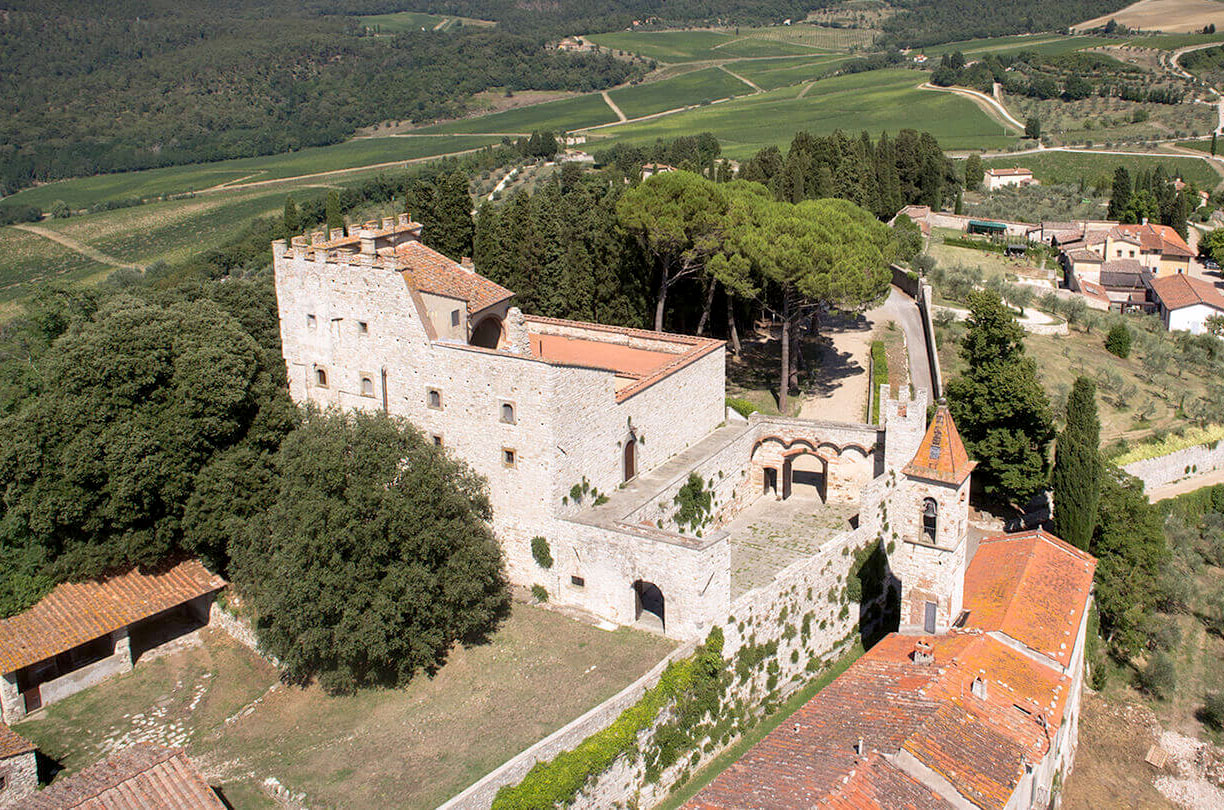
Credit: Frescobaldi
Why? What could be more Tuscan than tasting wine in a 1,000-year-old castle made from vines grown in the surrounding farm and owned by Florentine nobility?
Built to guard Florence, great artists such as Donatello and Michelozzo Michelozzi regularly purchased wine from the estate. It was destroyed in 1944, but has been partially rebuilt and you can still view the original cellar at the Renaissance villa.
Nipozzano is the real thing; a true working farm, and a big one at that with more than 600ha, including olive trees and an on-site olive press. Chianina and Angus cows can be seen roaming free in the fields.
A visit will include a tour of the monumental cellars used to age Chianti Rùfina, the higher altitude appellation in the Chianti area. Other highlights include the tasting room in an old kitchen, as well as the views of perfectly maintained vineyards across the valley.
If you are there to buy, the old vintages start from 1864 – but Marchese Lamberto Frescobaldi is very fond of the 1960, 1974 or 1981.
There is no restaurant, but you can request that your visit includes a meal using products grown on the property.
Visits: Visits must be booked in advance. You can also book a stay in one of four exclusive rooms in the village of Castello Nipozzano.
Address and contact: Via di Nipozzano, 50060 Pelago, Florence; +39 055 8311050
Chianti Classico
Antinori nel Chianti Classico
Chianti Classico
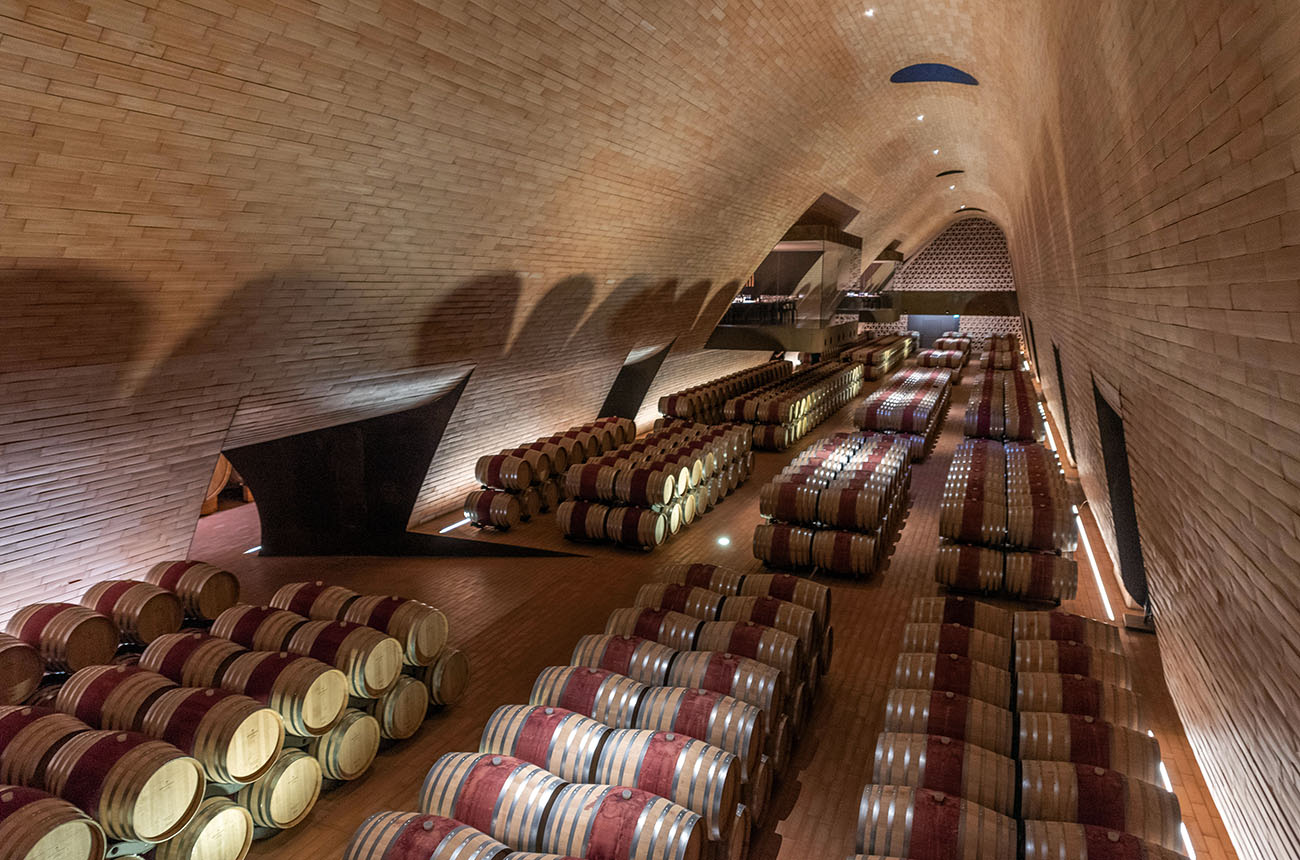
Credit: Eckhard Supp / Alamy
Why? Antinori’s Chianti Classico estate offers slick architecture and a modern wine tour from one of Tuscany’s most historic families.
Less than 20km from the heart of Florence, right off the main highway going to Siena, is Antinori’s stunning Chianti Classico winery. Set among olive groves and geometrically aligned vineyards in Bargino, San Casciano in Val di Pesa, the low profile winery is set into the hillside.
The Antinori family has been in the wine business since 1385, and here you will find an active and prolific wine empire that boasts two of Italy’s top wines: Tignanello and Solaia, produced nearby.
Inaugurated in 2012, the winery, designed by leading Italian architect Marco Casamonti, has more than 600 years of winemaking on display in its wine museum. There is a book shop, art collection and, of course, wine bar and tasting rooms.
All of this is housed within a structure using local terracotta, conceived to generate the perfect climatic conditions needed for the barrels. An incredible iron spine to the building gives the sensation that the floor is actually suspended above the foundation.
Visits: Group tours (private tours available to book too) run throughout the day for €45 per person – booking essential if you would like the tour in English. This 1.5-hour tour takes you from the rooftop vineyard to the various production areas, finishing in the wine museum, where a tasting of three wines will take place.
Prefer a tasting without the tour? The ‘Tuscan Stories’ tasting (€30 per person) guides you through Tuscany with four representative wines from Antinori’s estates.
Looking to taste some of the company’s most iconic wines? The ‘CRU Tour’ (€180 per person, including lunch) take place in the intimate Bottaia room or in the evocative suspended room overlooking the barrel cellar, before concluding with lunch and more wines in the Rinuccio 1180 on-site restaurant.
Restaurant: Rooftop restaurant Rinuccio 1180 offers a seasonal menu with panoramic views.
Address and contact: Via Cassia per Siena 133, 50026 Bargino, San Casciano in Val di Pesa; +39 055 2359700
Castello di Querceto
Chianti Classico
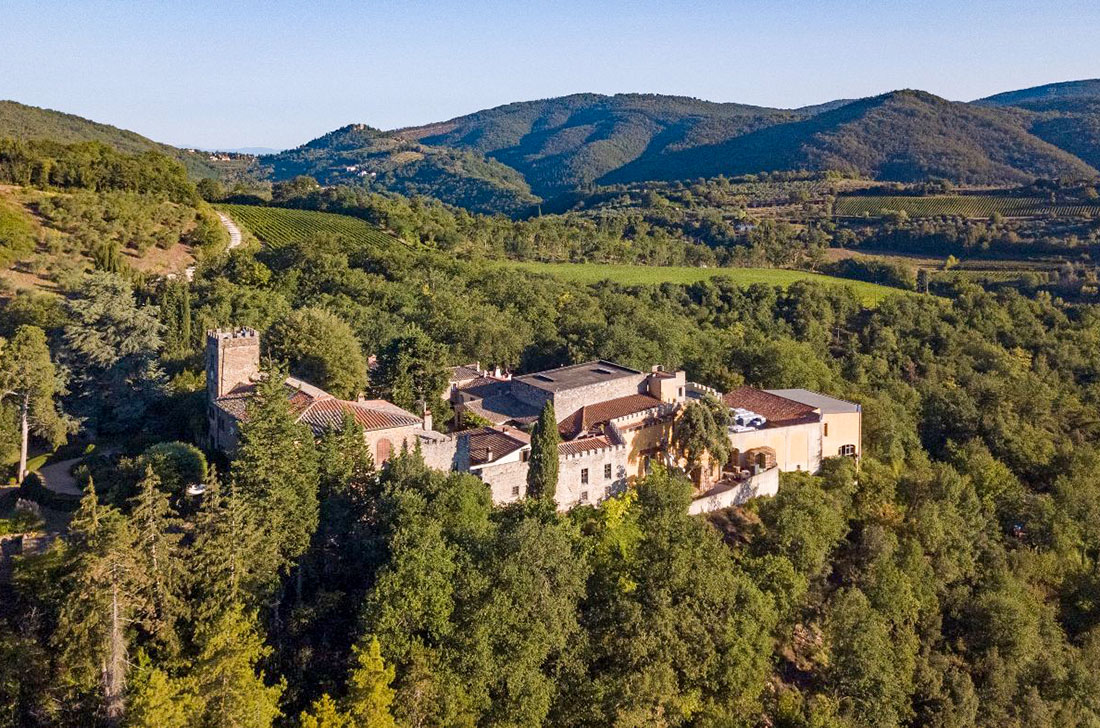
Credit: Castello di Querceto
Why? A centuries-old castle nestled in the high Chianti Classico hills, surrounded by vineyards and oak woods – the ideal setting for those seeking an authentic, unhurried taste of Tuscany.
Owned by the François family for over 125 years, Castello di Querceto is a hidden gem in the Greve in Chianti countryside. Built in a commanding position overlooking the valley, the castle — surrounded by Italian gardens where elegant peacocks roam — has retained its noble charm, with battlements, stone courtyards, and cellars still housing vintages dating back to 1904, a lot of them in spectacular condition.
This is one of the coolest areas of Chianti Classico, probably even considered too cold in the past, but which is now flourishing as climate change warms things up.
Castello di Querceto has 65 hectares of vineyards, where Sangiovese holds a place of honour. Each parcel offers distinct soils and exposures, making the estate a pioneer of single-vineyard expressions long before the concept of ‘cru’ became fashionable.
Castello di Querceto is best known for its Chianti Classico range — from the fresh and vibrant Chianti Classico and ageworthy Riserva, to the two Gran Selezione wines, Il Picchio and La Corte, the crown jewels of its production.
Hospitality here is welcoming and deeply Tuscan. Ten rustic-style apartments — some inside the castle, others in the surrounding farmhouse — offer an authentic countryside retreat, complete with terracotta floors, wood-beamed ceilings and views of the vineyards.
A swimming pool tucked among the trees and easy access to Florence (just 30km away) make it a peaceful yet connected base for exploring Tuscany. Visitors can book tastings and guided tours of the castle, winery and ancient cellar. The experience may include a walk through the historical wine archive, a taste of the estate’s traditional Vin Santo with cantucci, or a visit to the private chapel and family tower.
Visits: Tastings and tours are available for guests and visitors by appointment on weekdays and Saturday mornings. They range from €18 for a guided three-wine tasting, to €35 for a guided tour of the castle with its ancient tower, winemaking facilities, wine library and more.
Address and contact: Via A. François, 2 – 50022 Greve in Chianti; +39 055 85921
The coast (Bolgheri & Maremma)
Prima Pietra
Riparbella
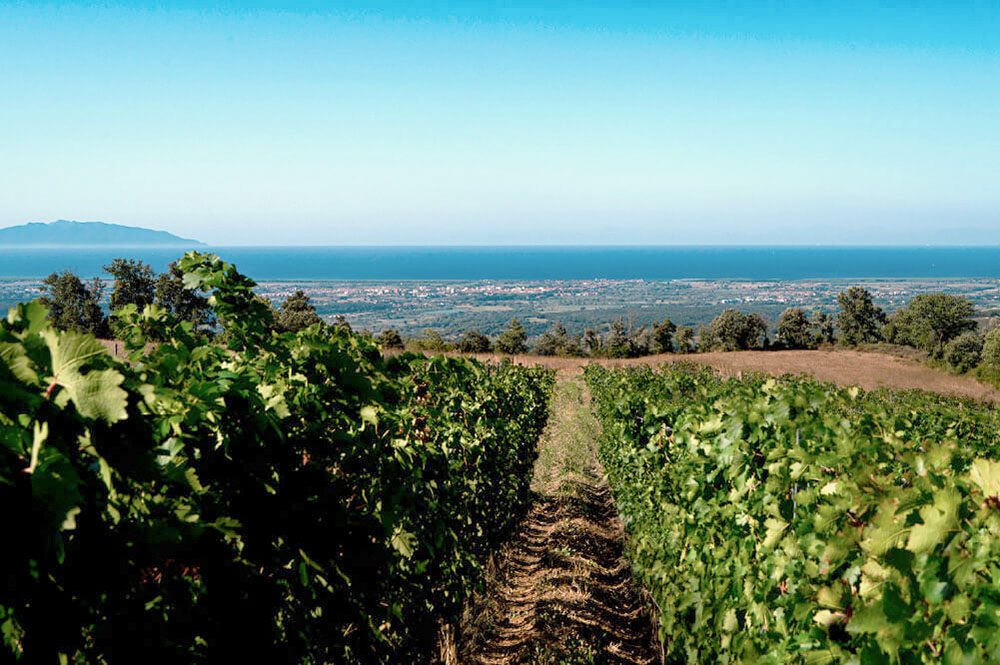
Credit: Prima Pietra
Why? If the numbers of cyclists and tourists in and around Bolgheri is overwhelming, then Riparbella is your antidote. Its remote tranquility makes for the perfect setting to taste a vertical of SuperTuscan wines.
Prima Pietra was the first winery bought by Massimo Ferragamo and the team has been making Bordeaux blends here since 2007.
After a drive into the small town of Riparbella, you come to the gates of Prima Pietra and the first thing to hit you is the tranquil scene across the Tuscan coast from high up in the hills.
Walk the vineyards with a glass of Chardonnay in hand, followed by a tour of the cellar and a tasting of older vintages in the tasting room, with a view to die for.
Visits: Experiences range from the ‘Classico’ including a tour plus tasting of three wines, to verticals, cooking classes and even sunset sips in the vineyard and harvest festivals. The winery advises that you book ahead.
Restaurant: There isn’t a restaurant, but if you book ahead then you can order a plate of Tuscan cheeses served with fresh bread, extra virgin olive oil from Castiglion del Bosco (see below), and honey.
Address and contact: Loc. I Prati – 56046 – Riparbella; +39 0586 1948 001
Cantina Meraviglia
Bolgheri

Credit: Tenuta Meraviglia
Why? Cantina Meraviglia is not just a production facility; it’s a hospitality project like no other. It aims to be a remarkable space for experiences where wine and landscape are intertwined in an unbreakable bond.
Get ready, because the winery will officially open its doors to the public this September [2025]! It’s the most recent project in Tuscany by Alejandro Bulgheroni, who invested in the renovation of Dievole in Chianti Classico, Podere Brizio and Poggio Landi in Montalcino, and now Cantina Meraviglia on the Tuscan coast.
While the other cellars have been gracefully renovated, Meraviglia is a brand new and visionary architectural project where the cellar sinks into an abandoned quarry. The facility will make the wines for both Tenuta Meraviglia and Tenuta Le Colonne, sister estates situated close to each other.
Visits: All tours are exclusive and available by advance reservation, and include a convenient pick-up service from the parking area.
By reservation, visitors will have the chance to tour the winery daily, immersing themselves in the culture of wine and stories of the region. The tour will place a special emphasis on the unique architecture of the building, the vision behind the project, and how the quarry’s characteristics influence wine production — such as temperature control, humidity and stability.
Enhance your visit with a 4×4 tour of the vineyards, reaching Vigna Pianali, the origin of the homonymous cru which is available to taste.
As a grand finale, guests will have the opportunity to sample some older vintages of the estate’s most prestigious wines in a vertical tasting held in the captivating wine library — a glass-enclosed room suspended above the ageing barrels.
Restaurant: After the tour, guests can choose to stop by the Bistró Toscano at sister estate Tenuta Le Colonne for a delightful lunch, dinner or aperitif.
Address and contact: Via Vecchia Aurelia, 418, 57022 Donoratico; +39 0565 775246
Tenuta Sette Cieli
Bolgheri/Monteverdi Marittimo
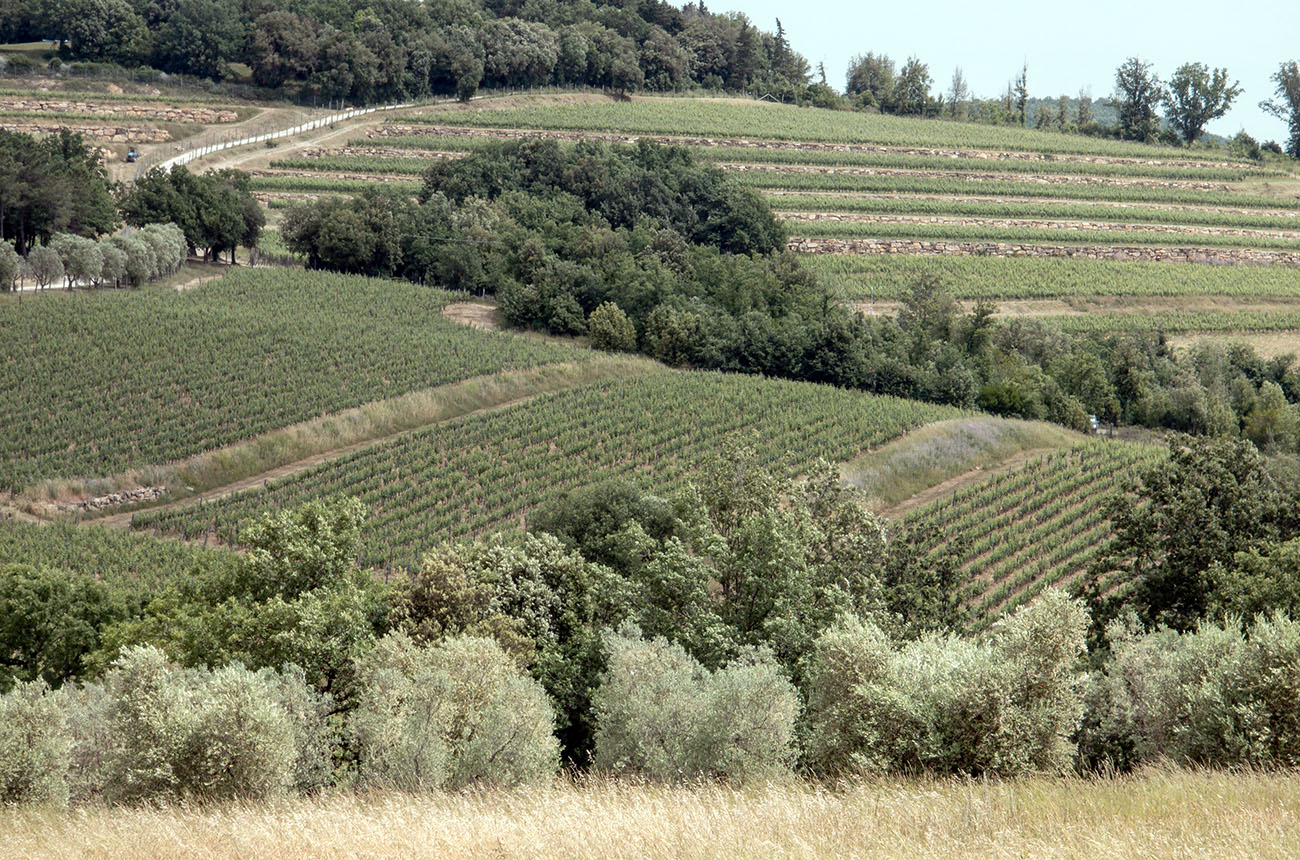
Credit: James Button / Decanter
Why? From Lombardy to Tuscany, from the silk area in Como to that of wine in Bolgheri. This is the story of Ambrogio Cremona Ratti, who wanted to pour his heart and soul into the highest winery in the area of Bolgheri and Castagneto Carducci. Ambrogio has chosen one of the most dynamic winemakers in Tuscany, Elena Pozzolini, who firmly holds the reins of this company’s production.
It takes a 15-minute drive up through the woods along a white road to reach the 10 hectares of dry stone wall terraced vineyards (plus another five hectares from a winery within the Bolgheri DOC) at an altitude of 400 metres, yet close to the sea. From here you get a stunning panorama of Bolgheri below, and you face the historic vineyard of Sassicaia, named for the presence of stones – and Sette Cieli’s vineyards seem to share the same profile.
At Tenuta Sette Cieli, the invitation extends beyond just wine tasting; the estate offers immersive hospitality experiences. Visitors can partake in guided tours of the vineyards and engage in tastings that delve into the artistry of the winemaking process.
These visits provide an opportunity to appreciate the breathtaking scenery and stunning beauty of the surrounding landscape. It’s a chance to connect deeply with the essence of the estate and the dedication behind each bottle, while learning the craft of fine winemaking and hearing all kinds of anecdotes from Elena.
Visits: Tastings and tours available for guests and visitors by appointment.
Address and contact: Azienda Agricola Tenuta dei Sette Cieli, Monteverdi Marittimo; +39 0586 677435
Castello di Vicarello
Cinigiano

Credit: Victor Fitz / Castello di Vicarello
Why? A medieval hamlet turned boutique wine retreat in the unspoiled Maremma – now an award-winning destination perched on a hilltop surrounded by olive groves and vineyards.
Castello di Vicarello is an unexpected blend of historic stone buildings, contemporary style and winemaking vision. This little 12th century borgo with its fortress, lovingly restored by the Baccheschi Berti family, overlooks the Ombrone Valley with views that stretch to Monte Amiata and the Tyrrhenian Sea.
Far from Tuscany’s usual routes, it offers a different kind of wine experience: intimate, refined and rooted in place.
The estate’s seven hectares of organically farmed vineyards are divided across three distinctive sites, all planted at ultra-high densities and trained to alberello toscano, a traditional bush-trained system, here reinterpreted for modern precision and terroir focus.
The wines reflect this meticulous approach: ‘Castello di Vicarello’, a classic Bordeaux blend, has been the estate’s flagship wine since 2004.
But Castello di Vicarello is not just about wine. The ancient borgo has been transformed into one of Tuscany’s most exclusive retreats, with 10 individually designed suites and a newly added private villa, all surrounded by gardens, olive groves, two beautiful swimming pools – and silence.
From vineyard walks and tastings to cooking classes, yoga in the forest, or leather workshops with local artisans, the experience is tailored for those who seek beauty and authenticity in every detail. A place one would want to live in.
Visits: Tastings and tours available for guests and visitors by appointment.
Restaurant: Seasonal menus by executive chef Massimiliano Volonterio celebrate local, organic ingredients.
Address and contact: Poggi del Sasso, Cinigiano; +39 0564 990718
South-Central Tuscany (Montalcino & Montepulciano)
Castiglion del Bosco
Montalcino
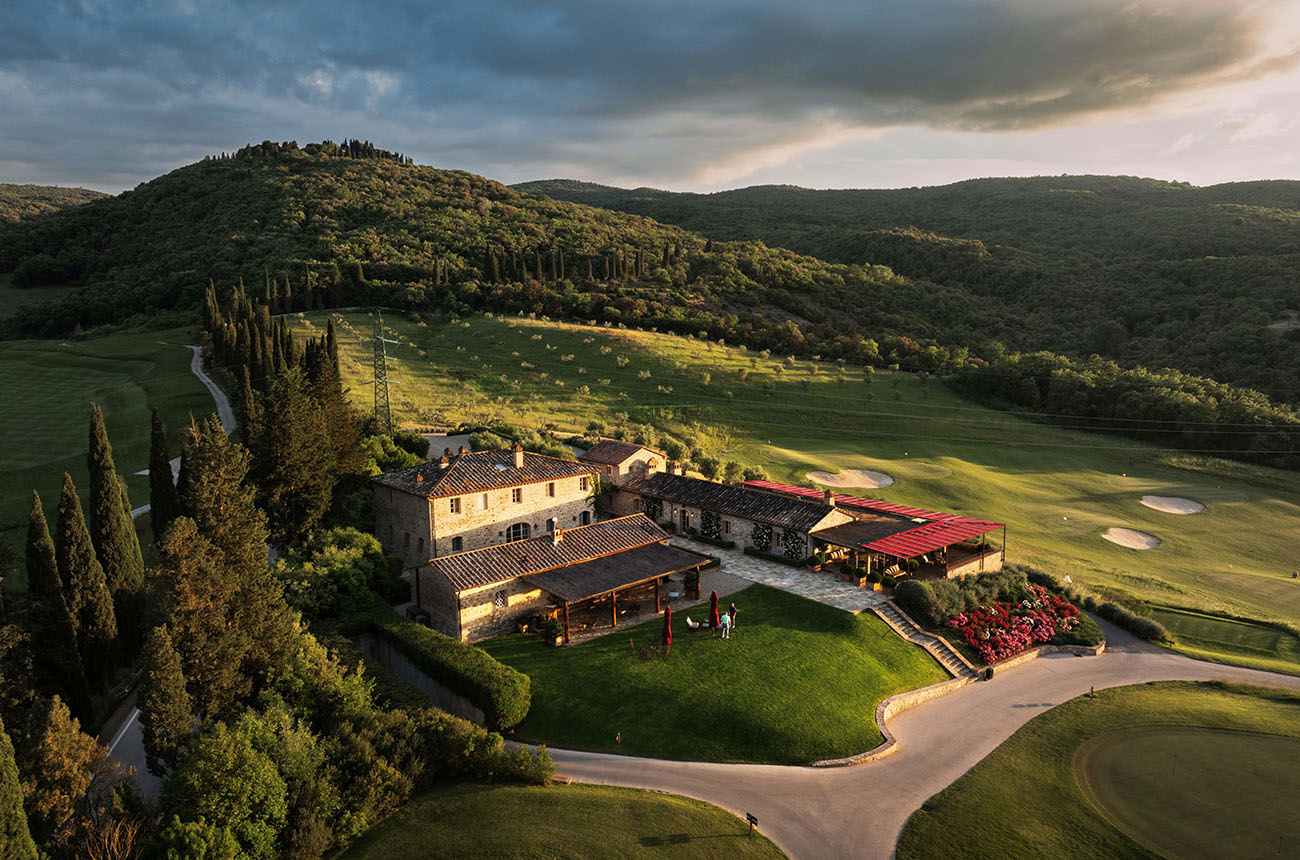
Credit: Castiglion del Bosco
Why? Slick, fashionable and indulgent, with several wine tour experts on hand, two wonderful restaurants and its own truffle forests.
Massimo Ferragamo bought this estate – a small hamlet in Montalcino complete with 13th century church and frescos – in 2003. Not only did he create a beautiful winery producing modern-style Brunello, he has also a built the splendid Rosewood resort with two great restaurants, a spa and one of Italy’s most sought-after golf courses, designed by Tom Weiskopf. Ferragamo sold the estate in 2022 but the family still has ties with the property.
Visits: Various types of visit that can be arranged at a time to suit, depending on your interests. Booking beforehand is required.
The signature tour of one hour is broken down into a vineyard visit, a tour of the cellar and culminates in a wine tasting. Cheese fans might like to opt for the six-wine and cheese pairing option, complete with a tour of the Capanna vineyard and wine cellars.
There is also the option of a six-vintage vertical tasting of Brunello di Montalcino.
Looking for an elite experience? Castiglion del Bosco and Podere le Ripi have teamed up to offer ‘Brunello in Flight’, a helicopter tour of the two estates which concludes with lunch at Michelin-starred Il Silene.
Restaurant: The main restaurant, Campo del Drago, is known for its excellent fare in elegant surroundings. For a more casual dining experience, there is a traditional trattoria and cosy wine bar with a stunning terrace overlooking the valley. And the wine list offers top Italian wines at great prices.
We would thoroughly recommend booking for lunch in either; both are overseen by head chef Matteo Temperini.
All the ingredients are grown in the hamlet in a fantastic organic vegetable garden.
Address and contact: Castiglion del Bosco, 53024 Montalcino Siena; +39 0577 1913001
Podere Forte
Castiglione d’Orcia
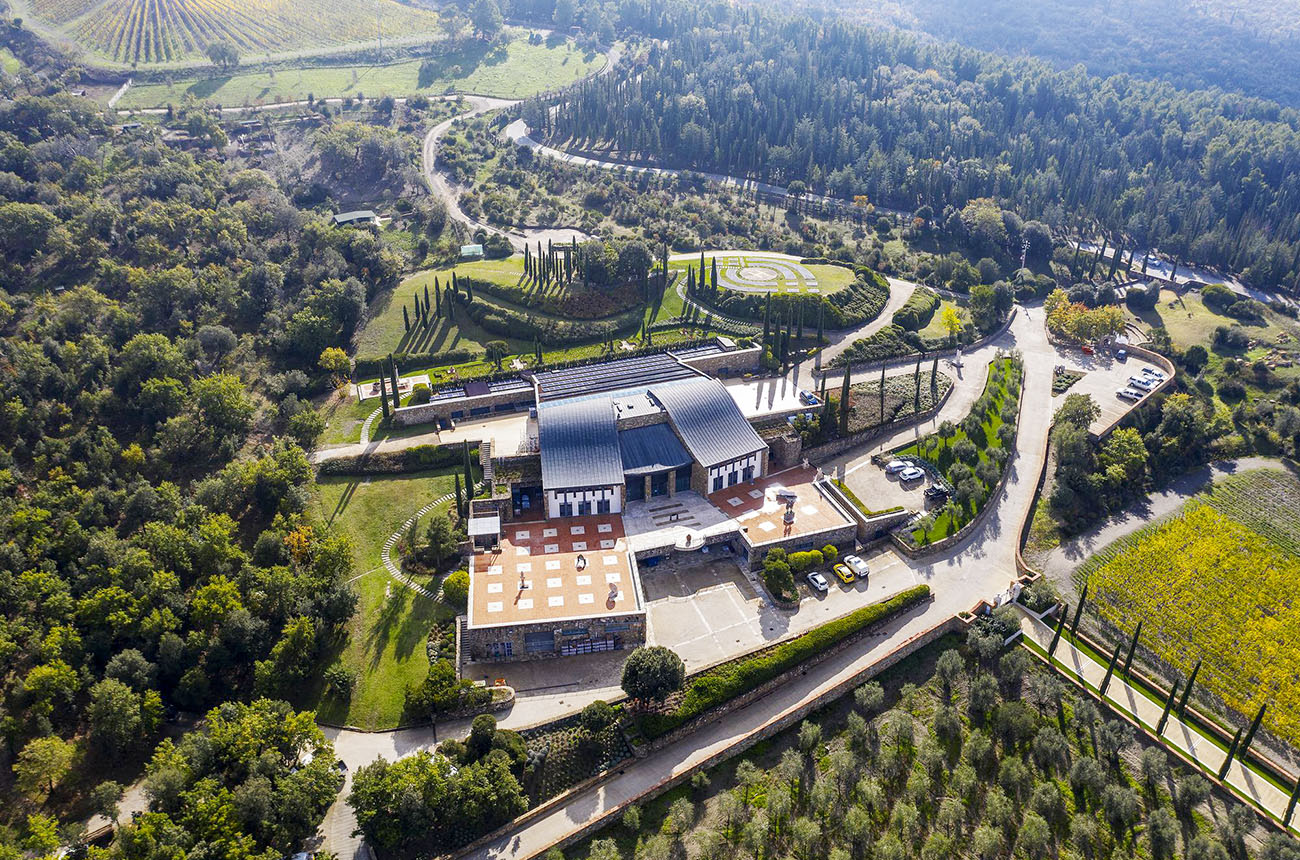
Credit: Podere Forte
Why? In 1997, Podere Forte marked the beginning of an intriguing exploration at the heart of the Val d’Orcia hills, an area recognised as a UNESCO World Heritage Site since 2004.
In this enchanting setting, bees buzz among the flowers in the botanical garden, aromatic herbs fill the air with captivating scents, and various animal species, such as Cinta Senese pigs and goats, enrich the life of Podere Forte. The true protagonist here is the wine, a guardian of a millennia-old tradition and a symbol of the commitment the estate has towards its own history.
Podere Forte is a treasure among the hills, designed as a self-sufficient ecosystem where every element — from the soil to the sky, from plants to animals — plays an essential role in maintaining the natural balance necessary for sustainable, high-quality production.
The biodynamic practices employed are concrete and measurable – informed by science – and dedicated to regulating the rhythm of the seasons and organising agricultural work.
Strolling through the gardens, framed by breathtaking views, visitors are led into an experience that follows the fascinating journey of the grape, from meticulous selection to the contemplative silence of the cellar.
An unexpected treat here is the Blanc de Noirs sparkling wine, made of Sangiovese grown at almost 500 metres above sea level and aged for five years on the lees; serious structure, very refined perlage, and an amazing mineral complexity.
Visits: During a guided tour, visitors can immerse themselves in engaging stories that transform each encounter with the estate into a memorable and educational experience. Guests are welcomed with warmth and care, embarking on a journey that goes beyond mere knowledge. Visits can be booked directly on the website.
Tours range from ‘Classic’ (€65 per person), with a tour of the winery plus a tasting of three wines, to ‘Premium’ which encompasses all the wines of the estate (€295 pp).
Address and contact: Località Petrucci, 13, 53023 Castiglione d’Orcia; +39 0577 8885100

